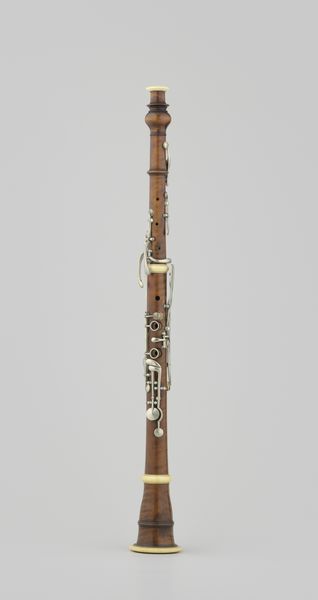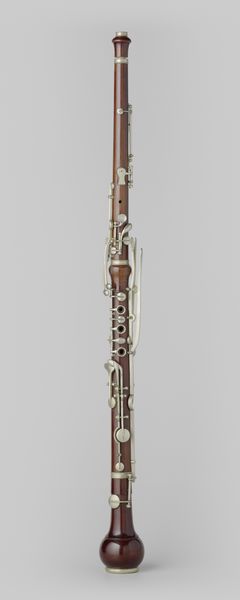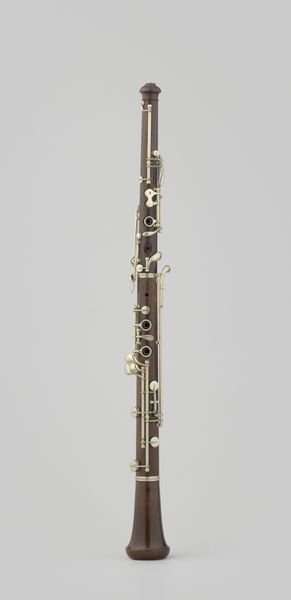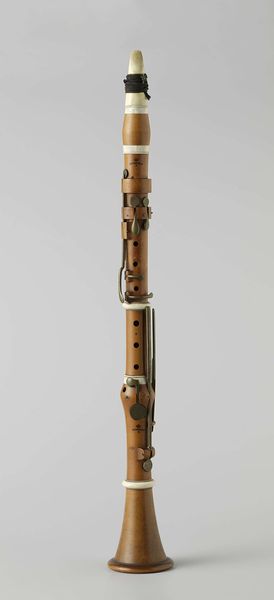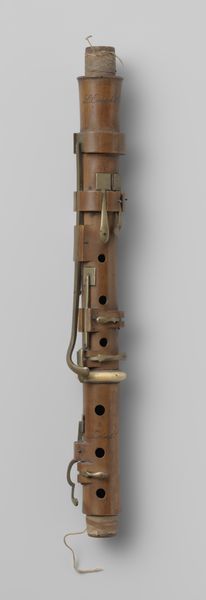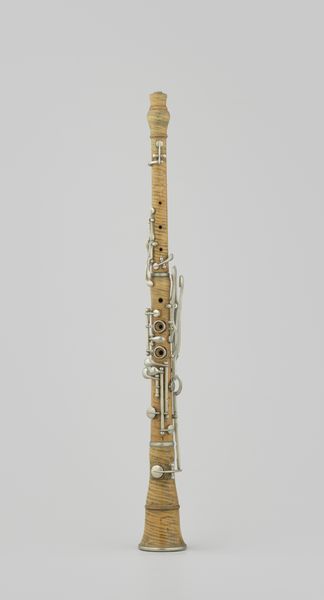
brass, metal, sculpture, wood
#
brass
#
metal
#
sculpture
#
wood
#
musical-instrument
Dimensions: L. 100cm (39 3/8in.)
Copyright: Public Domain
Editor: So, here we have an alto clarinet in E-flat, dating from 1880 to 1910, made by Charles Mahillon. The materials used seem to be a combination of wood, brass and metal. It has a really intricate, almost steampunk aesthetic. What do you see in this piece beyond its obvious function? Curator: Well, instruments like this weren’t just tools for making music; they also reflected the socio-political climate of the time. The late 19th century was a period of intense colonialism. Instruments were, and continue to be, exported all over the world. Who had access to musical education? What kind of music was deemed 'high art', and who got to decide? Editor: That's interesting. I never thought about it in terms of access and power structures. Curator: Consider this: wind instruments, initially handmade and exclusive, became more mass-produced. As such, could instruments like this democratize access to musical expression, or were they reinforcing existing class structures? Who was playing this, and what kind of music were they playing? These objects don’t exist in a vacuum. Editor: So, looking at the clarinet, you see a reflection of society, a history of privilege and perhaps even cultural exchange, but also the risk of cultural imposition? Curator: Exactly. The design elements, the very choice of materials, even the keys themselves – they all tell a story of craftsmanship but also speak volumes about the global movements and exchanges of the era. Where were the raw materials sourced? What was the experience of the craftsman who made it? And how did their cultural and social background influence the choices they made when producing the piece? Editor: I suppose even something seemingly straightforward, like a clarinet, has so many layers once you start digging. Thanks, that's given me a lot to consider. Curator: Absolutely! The beauty of art lies in its capacity to provoke those questions. And thinking critically about history enriches the experience.
Comments
No comments
Be the first to comment and join the conversation on the ultimate creative platform.



